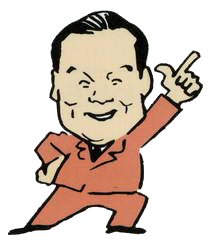Karma in Action: How Small Rewards Shape Choices
Karma is often imagined as cosmic justice—rewarding virtue and punishing vice across lifetimes—but a more grounded view sees it as a dynamic force of invisible momentum shaped by repeated actions. This momentum doesn’t vanish under gravity; instead, it persists, influenced by friction and inertia. Just as a slowed object resists stopping, so too do human choices accumulate consequences that either sustain or unravel stability. In systems like Drop the Boss, we witness how small, consistent rewards create forward motion without dramatic collapse—mirroring how incremental incentives fuel sustained engagement.
The Foundation: Momentum Beyond Collapse
Karma, in this framework, is not about sudden retribution but about balance maintained through steady input. Physics teaches us that momentum—defined as mass times velocity—resists absolute stillness. No force is truly zero; inertia ensures motion continues until countered. Drop the Boss dramatizes this principle: a leader’s fall isn’t triggered by a single mistake, but by a chain of accumulated, small choices that gradually erode resilience. Each delayed reward acts like a subtle push forward, while missed reinforcement acts as friction slowing recovery. This persistent push prevents collapse—just as consistent rewards prevent stagnation in personal and organizational systems.
- Momentum: mass × velocity → inertia that resists change
- Accumulated choices = shifting equilibrium
- Small rewards = sustained micro-forces
- Missed reinforcement = friction that stabilizes decline
In Drop the Boss, the metaphor of a leader’s slow descent reflects this delicate balance. Each micro-win acts as a forward impulse. When rewards flow regularly, the system maintains its trajectory; when they falter, inertia gives way to decay. This mirrors real-world behavior: small, meaningful recognition fuels continued effort, while empty cycles create inertia toward disengagement.
Physics as Parable: Momentum Without Zero
From a physical standpoint, momentum embodies resistance to absolute stop—no external force is truly zero. Similarly, Drop the Boss illustrates how choices create persistent momentum. Each reward acts like a tiny push sustaining forward motion, while inaction or punishment functions as friction. The game’s design shows that collapse doesn’t require sudden failure; it emerges when forward forces weaken and new ones fail to arrive. This is not decay from gravity, but a slow shift when momentum sources diminish. Just as small, consistent incentives prevent stagnation, so too do daily reinforcements in learning, leadership, and habit formation.
Micro-Incentives Sustain Momentum
The psychological loop is simple yet powerful: reward triggers action, action generates reinforcement, and reinforcement builds habit. Drop the Boss captures this beautifully. With micro-rewards, players feel immediate progress—not overwhelming pressure—keeping effort flowing. This contrasts with one-off rewards, which create brief spikes but little lasting change. In real-world systems—from education to workplace culture—balanced, frequent feedback sustains engagement far longer than rare, large bursts.
| Element | Purpose |
|---|---|
| Micro-rewards | Stimulate action without pressure |
| Feedback loops | Reinforce behavior predictably |
| Consistent pacing | Maintain equilibrium, avoid stagnation |
Balanced reward design is key—too frequent rewards overwhelm, too sparse ones permit decay. Drop the Boss exemplifies this equilibrium, showing how small, regular wins sustain momentum without tipping systems into collapse.
Cultural Echoes: Pride’s Fall and the Tether of Progress
Myths like Icarus and King Midas warn of hubris leading to collapse—hubris as overconfidence without feedback. Drop the Boss echoes this by simulating how small, sustained rewards counter stagnation. When progress is steady, pride in achievement reinforces continued effort. Conversely, missing rewards create inertia, inviting complacency and erosion—much like Midas’s gold losing its warmth when joy fades. The game models how momentum, nurtured by consistent reinforcement, prevents the tragic fall of lost momentum.
Designing for Behavior: From Game to Life
Effective systems—whether digital games or human organizations—avoid zero-points of failure by sustaining momentum through feedback and reward. Drop the Boss illustrates this principle: small, consistent incentives fuel long-term engagement by aligning with natural inertia. Designers and leaders can learn from this: create environments where progress feels tangible, where each action fuels the next. In personal growth, in teams, in organizations, momentum matters more than isolated wins.
Beyond the Screen: Karma in Real Choices
In daily life, karma unfolds not through punishment or reward, but through accumulated momentum. Every choice shifts personal equilibrium—small, repeated actions build lasting patterns. Drop the Boss mirrors this: consistent micro-wins create forward motion; gaps allow inertia to set in. Viewing gameplay as a mirror invites reflection: what momentum sustain in your goals? What small rewards anchor progress? The game teaches us to nurture positive tethers, preventing drift and encouraging growth.
What This Means for Designers and Leaders
To avoid collapse and foster growth, build systems where momentum flourishes—not flickers and fades. Drop the Boss proves that small, regular rewards prevent stagnation by maintaining inertia toward progress. Designers and leaders should focus not on dramatic wins, but on steady, predictable reinforcement. This creates resilient systems where positive karma fuels long-term engagement—turning effort into enduring momentum.
In the end, karma is not cosmic justice, but the physics of persistence—where small rewards act as forces sustaining choice, and momentum, once built, becomes self-reinforcing.
try drop the boss play for free

